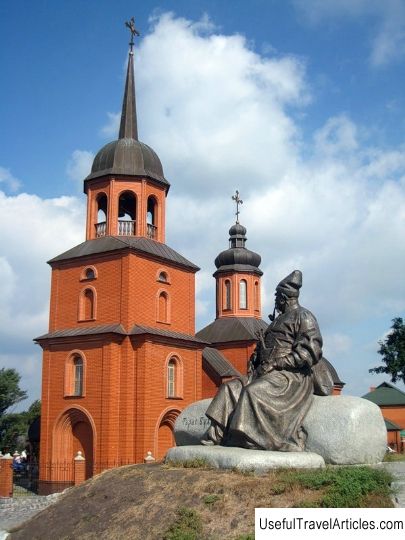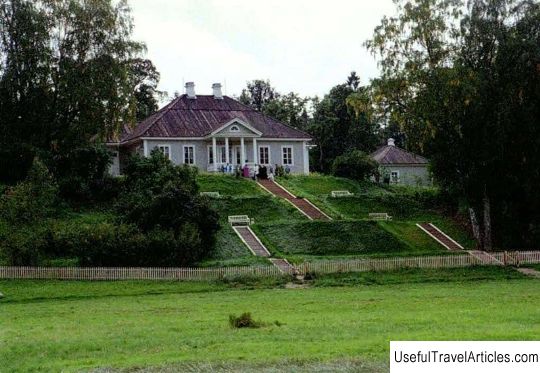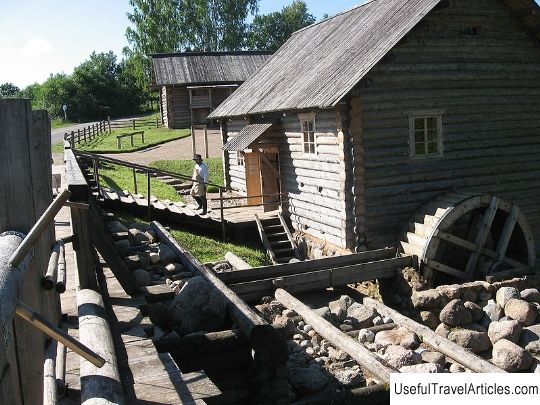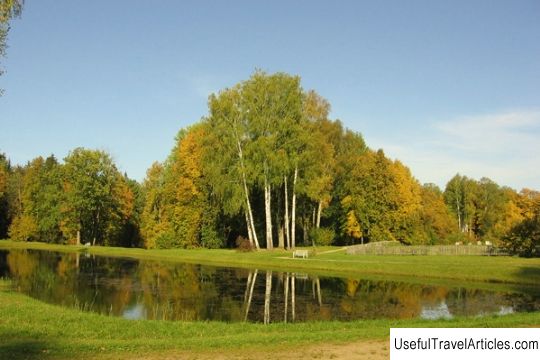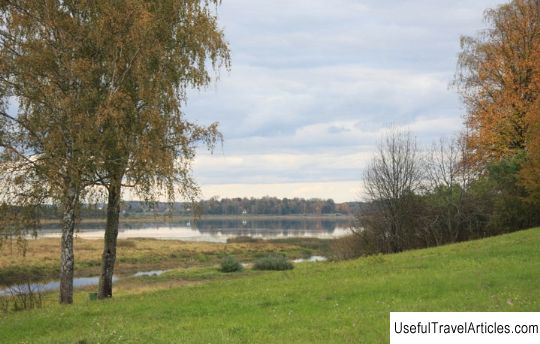Mikhailovskie groves and park description and photos - Russia - North-West: Pushkinskie Gory
Rating: 7,6/10 (100 votes) 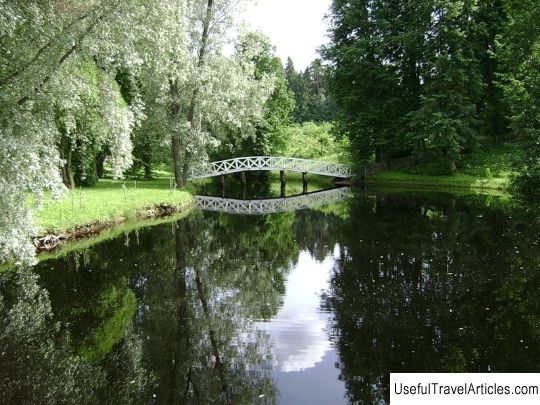
Mikhailovskie groves and park description and photos - Russia - North-West: Pushkinskie Gory. Detailed information about the attraction. Description, photos and a map showing the nearest significant objects. Photo and descriptionFrom Pushkinskiye Gory to Mikhailovskoye you can walk along a four-kilometer road, which bifurcates in the middle of the way: a straight line leads further to Trigorskoye, and turning right, you find yourself in an old Russian village called Bugrovo. Behind the village there is a forest - Mikhailovskie groves. From this place to the poet's family estate in Mikhailovskoye, the road goes through a delightful pine forest. In different parts of the Pushkin Reserve, Mikhailovskie groves differ in the composition of tree species. In the place where the groves join the Mikhailovsky Park and descend to the Malenets Lake, mainly there are centuries-old pines of a special type - ship pines. They are slender giants with a smooth trunk and reaching up to thirty meters in height, with a small evergreen tent that adorns the summit. This is the most ancient part of the Mikhailovsky groves, in fact, most of the trees that are the poet's contemporaries have survived here. The groves are constantly filled with life. From the earliest spring, migratory birds arriving at their native nesting sites until autumn fill the Mikhailovsky groves with incessant hubbub. And already in the first snow, you can see the traces of a wild boar, elk, wild goat, squirrel, fox, hare. In spring, forest lawns emit blue light from snowdrops. It has long been believed that each noble estate had its own park. There were different parks on different estates. Everything depended on the taste and requirements of the owners of the estate, as well as on the time of their construction. Mikhailovsky Park is an example of landscape architecture of the late 18th - early 19th centuries. Mikhailovsky Park was created when the estate was founded by O. A. Hannibal - Pushkin's grandfather, based on examples of gardening art of that time and is well preserved to this day. The central driveway Spruce Alley divides the park into two halves: western and eastern. Spruce alley starts from a round decorative flower bed located near the manor house. In this part of the park, not far from the house, huge giant spruces grow, reaching a height of thirty meters. The age of these spruces has crossed the two hundred year mark. Young beauties stand between the giant fir trees. They were planted after the war to replace those destroyed by the Nazis. Thanks to replanting in 1956, made in the Spruce Alley, it now has the same length as in Pushkin's time. The Spruce Alley ends with the Chapel of Michael the Archangel, which has been restored. On the right side of the Spruce Alley there is a narrow alley, passing by the pond, across which a bridge is thrown to the old Hannibalovskoe pond, which is a picturesque corner of Mikhailovsky Park. Next to the alley leading from the Spruce Alley to the old pond is the Pushkin Grotto. The grotto disappeared many decades ago. But thanks to the excavations carried out here and the documents found, it was restored in the spring of 1981. To the left of the Spruce Alley, in the very depths of the park, there is a six-sided Pushkin gazebo with a low spire, which was recreated on the site of a similar gazebo of Pushkin's time. Four small alleys are located radially from the gazebo. One of them - a birch one, restored in 1954, leads to a small pond overgrown with duckweed. From this pond originates one of the most beautiful alleys in the park - linden, which is otherwise called "Kern Alley". The name is associated with a visit to Mikhailovsky by Anna Petrovna Kern, who was staying in Trigorskoye in June 1825. From the linden alley you can walk to a small island in the middle of the pond. The island is called "The Island of Solitude". It is overshadowed by a group of birches, pines and lindens. According to legend, the poet loved to visit this secluded corner of the park. From the facade of the House-Museum on the north side, the park has a descent to the river Sorot. Almost from the very porch of the manor house to the river there is a spacious wooden staircase, bordered on both sides by bushes of lilac and jasmine.               We also recommend reading Theater. Vl. Mayakovsky description and photo - Russia - Moscow: Moscow Topic: Mikhailovskie groves and park description and photos - Russia - North-West: Pushkinskie Gory. |
